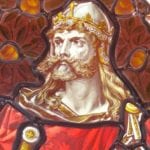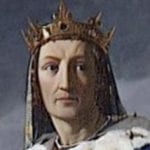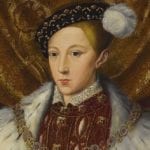 Politics
Politics  Politics
Politics  Weird Stuff
Weird Stuff Ten Bizarre Facts About The Doge Meme
 Our World
Our World 10 Ways Your Christmas Tree Is More Lit Than You Think
 Movies and TV
Movies and TV The 10 Coolest Stars to Set Sail on The Love Boat
 History
History 10 Things You Didn’t Know About the American National Anthem
 Technology
Technology Top 10 Everyday Tech Buzzwords That Hide a Darker Past
 Humans
Humans 10 Everyday Human Behaviors That Are Actually Survival Instincts
 Animals
Animals 10 Animals That Humiliated and Harmed Historical Leaders
 History
History 10 Most Influential Protests in Modern History
 Creepy
Creepy 10 More Representations of Death from Myth, Legend, and Folktale
 Politics
Politics 10 Political Scandals That Sent Crowds Into the Streets
 Weird Stuff
Weird Stuff Ten Bizarre Facts About The Doge Meme
 Our World
Our World 10 Ways Your Christmas Tree Is More Lit Than You Think
Who's Behind Listverse?

Jamie Frater
Head Editor
Jamie founded Listverse due to an insatiable desire to share fascinating, obscure, and bizarre facts. He has been a guest speaker on numerous national radio and television stations and is a five time published author.
More About Us Movies and TV
Movies and TV The 10 Coolest Stars to Set Sail on The Love Boat
 History
History 10 Things You Didn’t Know About the American National Anthem
 Technology
Technology Top 10 Everyday Tech Buzzwords That Hide a Darker Past
 Humans
Humans 10 Everyday Human Behaviors That Are Actually Survival Instincts
 Animals
Animals 10 Animals That Humiliated and Harmed Historical Leaders
 History
History 10 Most Influential Protests in Modern History
 Creepy
Creepy 10 More Representations of Death from Myth, Legend, and Folktale
10 Kings With Weird Hobbies
Many people dream of being a king or queen, but in truth, it is a hard task. While the wealth and power are an obvious boon, monarchs live their whole lives in the public gaze, their every act observed and criticized by thousands of people. Their position at the center of a state often means they have little, if any, control over their personal schedules, and their days are full of political and ceremonial obligations which could cause considerable damage if they don’t go smoothly.
Some people cope with these pressures better than others. History is full of successful, capable rulers, but it is also littered with those who succumbed to the pressure and suffered mental and physical health problems. It is a stressful job, and many of them only survived by dedicating themselves to unusual pursuits. Today, we’re investigating ten kings who had strange hobbies.
10 Edward II—Digging
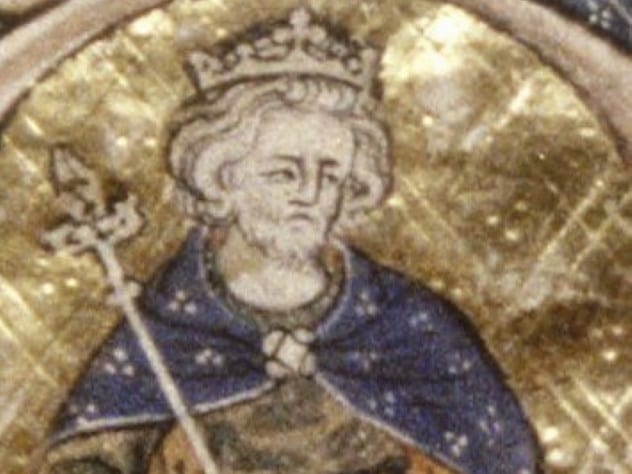
Although he’s one of the most reviled kings of English history today, in his early reign, Edward II was loved by his people. He was a beautiful specimen: tall and muscular, with long brown hair that fell to his shoulders. When he wanted to be, he could be very charismatic, impressing people with his performances in Parliament. But medieval people had very particular expectations of their monarchs, especially when it came to what they did in their spare time.
As the enlightened representatives of God, they were expected to be interested in art, music, feasting, and politics. Edward, however, was a thoroughly practical man. His interests were swimming, sailing, fishing, architecture, and digging ditches.[1] At numerous times in his reign, he was vilified by both writers and courtiers for abandoning his political duties to go sailing or fishing with peasants along the River Thames or overseeing the construction of houses. In one particularly hot summer, he even hopped into a ditch beside some peasants to help them dig. While the peasants were no doubt impressed, his courtiers were disgusted that a king would humiliate himself in such a way.
His 20-year reign was dominated by constant conflict with his court and Parliament, and his authority was restricted by the barons on numerous occasions. In the end, he seized his power back in a civil war and ruled with an iron fist until his increasingly dysfunctional government was deposed by an alliance between his wife and an English knight, who invaded and seized the throne.
9 Abdulhamid II—Woodworking
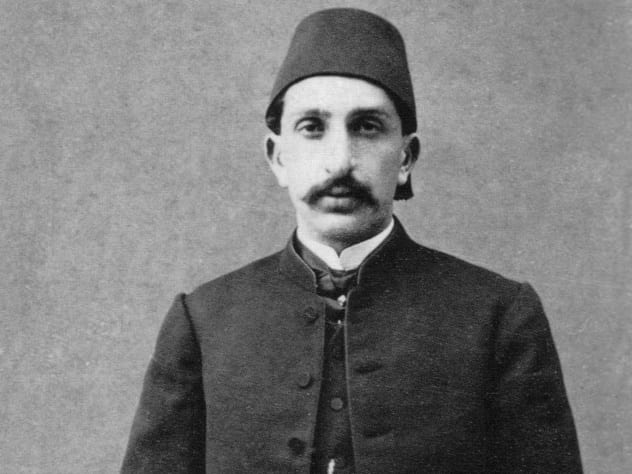
The Ottoman Empire was one of the final powerful states in the world which had a hereditary monarch who played an active role in politics. The final Ottoman sultan to wield absolute power was Abdulhamid II, who was ousted in a coup in 1909. He is a controversial figure today: His early reign was marked by his adherence to progressive politics, but in his later years, he dissolved the new Ottoman Parliament and tried to return the empire to its conservative base, while also overseeing the massacre of Armenians and the use of secret police.
Interestingly, his daughter published a book which granted us a unique insight into the life and personality of an Ottoman ruler. She reveals some fascinating facts about him, including that he used to like to be read to at night because he suffered from insomnia. His worries about his insomnia entered his waking life, to the point that he avoided reading thought-provoking books in case they ended up sticking in his head, preventing him from sleeping. But his favorite pastime was carpentry, which he practiced to relieve his fatigue.[2] He became prolific, even producing some of the furniture that his family used in private.
He was also a big fan of novels, particularly in the detective genre. While the first Turkish translations of Sherlock Holmes stories were published in 1908, the sultan discovered them years earlier and had them translated by a court scribe, amassing a large collection. When Sir Arthur Conan Doyle and his wife visited Turkey, the sultan actually summoned him and, through his chamberlain, presented Doyle with the Order of the Medjidie in honor of his achievements.
8 Friedrich Wilhelm I—Tall Soldiers
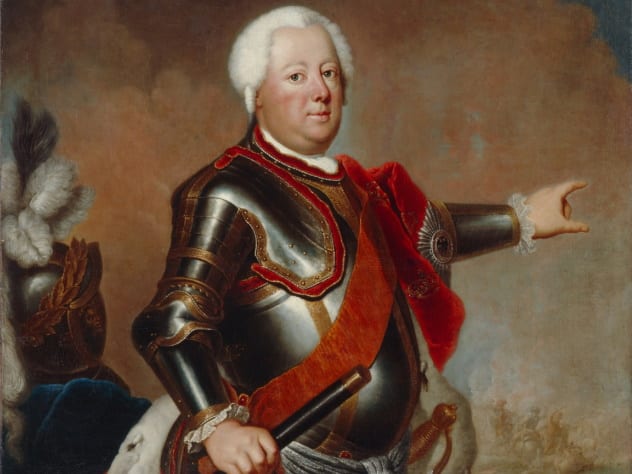
The German state of Prussia was famous for its effective army. In the era leading up to the Napoleonic Wars, Prussian soldiers were the most well-equipped and disciplined in Europe. Prussia developed a martial reputation which survived into World War II and beyond, and it had its roots in the eccentric King Friedrich Wilhelm I—often called the “Soldier King.”
In government, Friedrich was an effective statesman, avoiding war and reforming the state’s finances and bureaucracy. By the end of his reign, Prussia was one of the richest and most stable German states. He also fundamentally reformed the Prussian army, leaving his son and successor, Frederick the Great, the strongest army in Europe.
In his personal life, however, Friedrich was an unusual man with peculiar hobbies. His strangest project was the creation of the “Potsdam Giants,” a military unit made up of the tallest men in the kingdom.[3] They had the best uniforms and lodgings in the Prussian army, and soldiers were paid based on how tall they were, with the tallest being paid the most. He frequently arranged for unusually tall men to be kidnapped and press-ganged into the unit, and diplomats from other countries sent him tall men as offerings. He became increasingly obsessed with his project: Whenever he was sad, he would have them paraded in front of him, sometimes in his own bedroom when he was ill. He painted portraits of the individual soldiers from memory. In his later years, he indulged in experiments to make taller soldiers, including pairing them with tall women to breed new soldiers and sending some men to the stretching rack to enhance their height.
7 Olaf Tryggvason—Juggling Knives
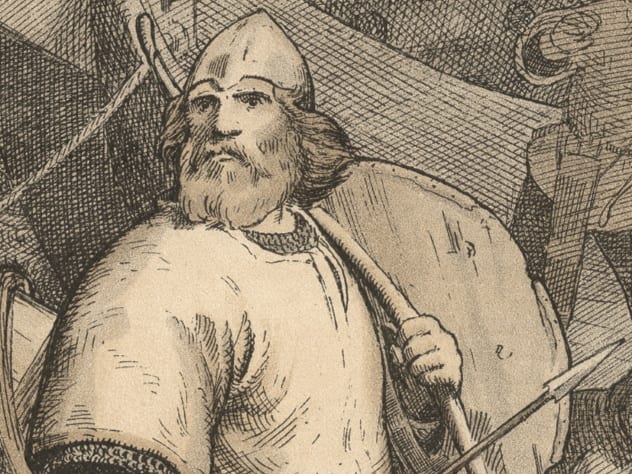
The Vikings were a highly militaristic people. While they didn’t go raiding as much as they do in modern TV shows and movies, their society did revolve around the pursuit of battle. The games they played in their spare time reflected this: Swimming was often a competition, and it wasn’t unheard-of for an athlete to push his opponent underwater. Wrestling was popular, as were ball games (the rules of which are sadly lost today). When two men disagreed over something, they could even end up settling it with a duel.
To be a successful ruler, a Viking king had to be an accomplished athlete. There are many stories of Viking kings and their sporting achievements, but the saga of the Viking king Olaf Tryggvason is particularly impressive. Olaf had some unusual hobbies: For one, he was a great rock climber, easily scaling the Smalsarhorn in Scandinavia and laying his shield at the top. When one of his followers got stuck halfway up, Olaf is said to have made his way to him and carried him back to the ground under one arm.[4]
He also indulged in other daring activities that Viking warriors often took part in, including “walking the oars” on a ship while at sea. Most interestingly, he discovered a unique trick that seems to have won him many supporters: He had the ability to “play with three knives so that one was always in the air, and he always caught them by the hilts.” In other words, he could juggle! This dexterity seems to have helped him in other areas of his life, since he could fight with a weapon in each hand and throw two spears at once.
6 Louis XVI—Locksmithing
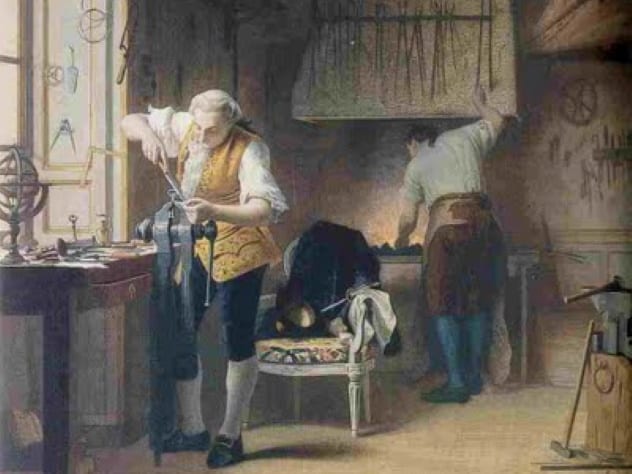
Louis XVI is well-known today for many things: He was the last French king before the French Revolution, he was the only French monarch to be beheaded, and he supported the American revolutionaries against Britain. He and his wife Marie Antoinette are often stereotyped as disinterested, self-absorbed aristocrats who terrorized France and didn’t care for her people.
In reality, Louis XVI was a rather gentle man. He was well-read and very interested in the sciences, particularly engineering and the mechanical arts. He personally helped to overhaul the French navy and, unlike many other contemporary French kings, never took a mistress. He was also concerned with the plight of France’s poor, ordering the removal of the restriction on bread prices in an effort to make food cheaper for the commoners.
His private passion, however, was locksmithing.[5] He was enamored by locks and surrounded himself with all different kinds, from simple contraptions to really elaborate, secret ones. He, like some scholars of the day, believed that all men should pursue some form of manual craft. Of course, in the highly public and sophisticated French court, such labor was seen as the work of peasants, not kings. Because of this, the king initially pursued his hobby in private, being educated by the court blacksmith behind closed doors. He had a private workshop installed above his library, complete with anvils, where he could practice his craft. Unfortunately, the secret eventually got out, and Louis was ridiculed in the papers and pamphlets of the day—particularly for the connotations that surrounded a married king fiddling with locks in his spare time.
5 Henry VII—Tennis
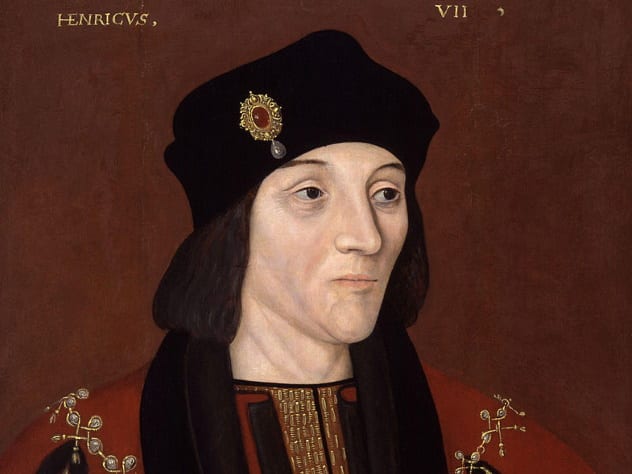
Henry VII is a king who is known today for being humorless and austere. A shrewd politician, he overhauled England’s government and made it extremely wealthy by advancing trade and industry and cutting spending. It’s no wonder he is former Chancellor George Osborne’s favorite British monarch. Henry was exceptionally serious, rarely smiled, and spent long hours working at his papers to ensure the prosperity of the realm he’d seized at swordpoint. He could speak many languages and read and write with skill, and he valued justice above all things.
In many ways, he was the total opposite of his son, Henry VIII, who eventually succeeded him. They did share one great passion, though: tennis.[6] By his son’s day, tennis was a common sport among the English nobility, and since Henry VIII was a great sportsman, it’s no surprise that he enjoyed a game of tennis.
While Henry V was the first English monarch to play, tennis still wasn’t a popular sport in England by Henry VII’s time. This didn’t stop him: He had six tennis courts built across the country over the course of his reign, including one at Westminster, the place where the royal government was based. Because of the king’s interest, it became a widely loved sport in the royal court, a tradition which would continue under his successors. Henry was an avid fan of the game and played regularly. In his later years when he could no longer play, he continued to watch and bet on matches. He lost £20 in bets between 1493 and 1499, more money than the average man or woman would have seen in their lifetime.
4 George III—Agriculture
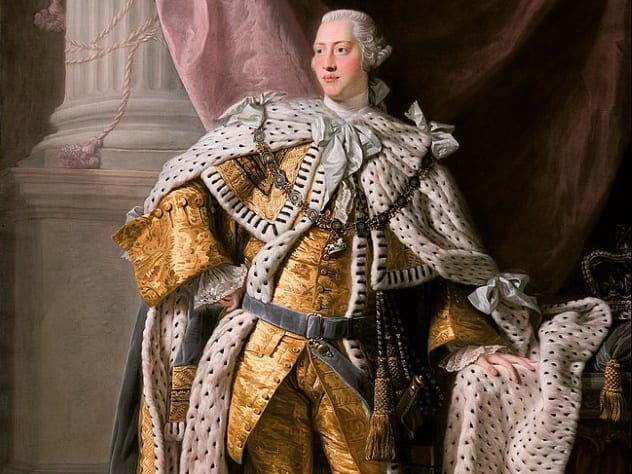
George III, the king who lost the American colonies, is often called Mad King George today. While he did unfortunately succumb to mental illness in his final years, he was the king of Great Britain for over half a century, and for the most part, he was a thoroughly sane and successful monarch. He was very interested in the day-to-day running of the realm and had a large collection of scientific instruments, many of which are on display today. He was a keen astronomer who funded the construction of the biggest telescope in the world at the time. And contrary to popular belief, George was not a tyrant: He went into the American revolution not hoping to expand his own powers but to defend the right of an elected Parliament to levy taxes on its subjects. Whether or not he was correct in his thinking, his intention was the preservation of Parliament, not his own rule.
The nickname “Mad King George” came about only in the final years of his reign. For much of his time as king, he was both ridiculed and honored with the nickname of “Farmer George.”[7] This was because he had an extremely keen interest in farming, writing papers on it, annotating books, and commonly corresponding with farmers across the country. Many at the time thought it was odd, but agriculture was the dominant industry in the country, and George’s attention helped to fuel the agricultural revolution that was taking place at the time. During his reign, the rural population soared, laying the ground for the industrial revolution that was already underway by the time of his death.
3 George V—Stamps
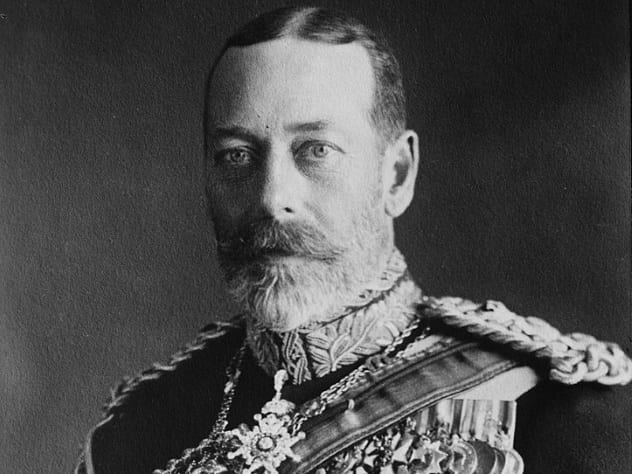
The British royal family today has thoroughly normal hobbies: The Queen and Prince William are said to be passionate bingo players, and her royal highness herself enjoys reading mystery novels and looking after her dogs and horses. She likes to watch horse racing, and when she’s at Balmoral, her Scottish residence, she hosts Scottish dances for her staff and neighbors. None of these hobbies can be seen as controversial.
Her grandfather, George V, was similarly average in his interests: His main hobby was stamp collecting.[8] Starting as a young prince, he continued his collection into his time as a monarch, even through the chaos of World War I. What’s unusual about George’s hobby was how many stamps he collected over his lifetime: His collection is made up of 328 albums of 60 pages each. That’s nearly 20,000 pages of stamps.
His passion earned him the nickname “The King of Philately,” philately being the proper name of stamp collecting. He was elected vice president of the Royal Philatelic Society of London in 1893. In 1905, while he was still a prince, he set a new record for the amount spent on a stamp: £1,450—roughly $220,000 US dollars today. A courtier later asked the prince if he’d heard that “some damned fool had paid as much as £1,400 for one stamp.” The prince replied by saying, “Yes, I was that damned fool!”
2 Farouk—Collecting Everything
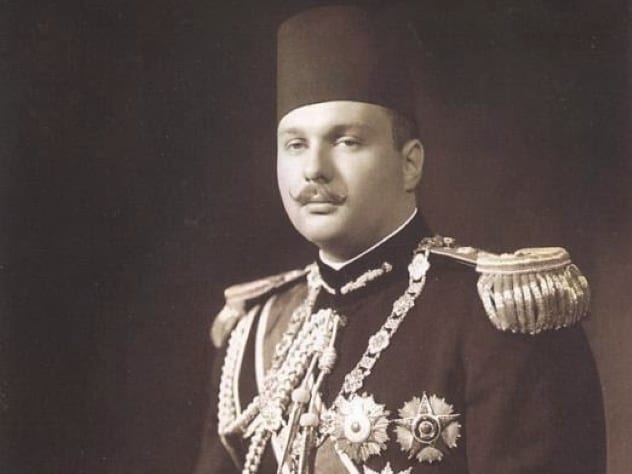
King Farouk, the last king of Egypt, was a selfish man: He ate, drank, and gamed to excess, raced his cars around the country’s streets—painting them red so that the police would know not to pull him over—and kept his palace’s lights on while the rest of the city was in blackout during the blitz. He seemingly cared about no one other than himself. His reign was dominated by corruption scandals, his people were impoverished, and his court was brimming with wealth. The Egyptian army eventually intervened, driving him out in 1952. Then the process of clearing out his possessions began.[9]
Farouk was perhaps one of the most prolific hoarders in history. His personal collection consisted of thousands of silk shirts, an entire fleet of Cadillacs, and 50 diamond-studded golden walking sticks. He collected an absurd amount of French baroque-style furniture, so much that he earned the nickname “Louis-Farouk.” His coin collection was one of the grandest in the world, consisting of over 8,500 coins, some of which—like the 1933 $20 gold double eagle and all five known examples of the 1913 liberty head nickel—would be worth millions today.
What was most shocking to people at the time, however, was his extensive pornography collection. A selection of seminude images were found under his pillow, but once it was all catalogued, his total collection stretched into the hundreds of thousands. This was almost certainly the largest porn collection in the world at the time. When confronted about it, Farouk happily admitted to owning it but was shocked by the lewd accusations, insisting that they were classical works of art.
1 Edward VIII—Flying
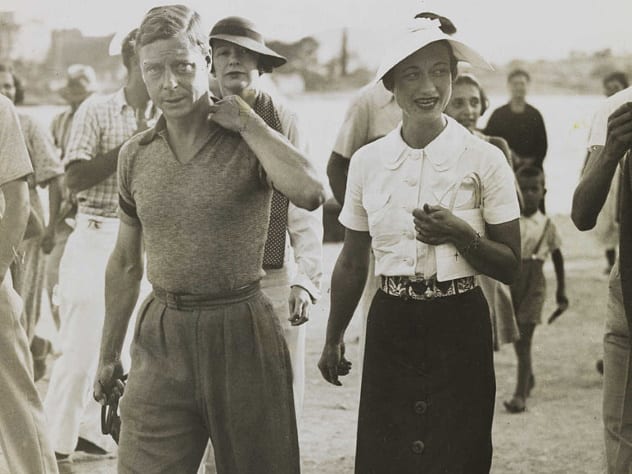
Edward VIII was king of the United Kingdom for less than a year. He was one of the few monarchs in British history never to be officially crowned. His short reign was dominated by fears that he would damage or even destroy the monarchy for good. Most famously, he insisted on pursuing the twice-divorced American Wallis Simpson. The Church of England at the time forbade remarriage while the divorcee was still alive, and the king was the head of the Church of England. None of this seemed to matter to Edward. He was reckless in other ways: He was disinterested in government procedure and trampled on tradition. And worst of all, he was probably a Nazi sympathizer. He visited Hitler in 1937 and, later in his life, privately confessed that he thought Hitler wasn’t a bad man. Needless to say, after Edward’s abdication, George VI didn’t want him back. In fact, George threatened to cut Edward’s royal allowance entirely if he ever tried to return to Britain.
In his spare time, though, Edward was an avid fan of flying. He was the first member of the royal family to fly himself to a public event and had his own pilot’s license. In typical fashion, he was apparently a reckless flyer, so much so that his father, the aforementioned George V, tried to ban him from flying altogether in case he died. Of course, Edward ignored his request.
In his final days as king, he made an elaborate plan to flee the country by airplane, even going so far as to book a hotel on the continent. It was only by the actions of British government intelligence that the flight was halted on the morning it was supposed to take off. Edward was ultimately made to abdicate before he left the country.[10]
Read about more oddball monarchs on 10 Crazy Stories About The Rulers Of Ancient China and 10 Crazy Facts About Europe’s Bizarre Habsburg Rulers.



